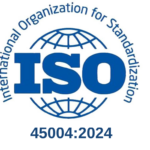Mental Health is an emerging WHS risk that has the potential to adversely impact organisations within any industry. With an average compensation payment $23,600 and almost 15 weeks in time off per claim*, mental health represents a WHS risk that no organisation can afford to ignore. [* SafeWork Australia Work-related Mental Disorders Profile 2015]
As workers’ mental health and wellbeing is a deeply personal issue, it is vitally important, to ensure that discussions are undertaken confidentially and sensitively, and that any potential ‘proactive measures’ are discreet, respectful of the worker and sensitive to their requirements.
Organisational indicators can often assist to identify a worker’s (or group of workers) mental health and wellbeing issues, and this provides the opportunity to proactively manage these issues before they become LTIs or compensation claims.
It is recommended that WHS professionals work in partnership with HR and other on-site personnel to identify problem areas and early indicators of issues. By utilising internal resources, and looking at organisational indicators such as those set out below, the WHS Professional may gain insights into the mental health and wellbeing of individuals, specific teams and the organisation in general. The organisational indicators may come from a variety of sections within a business, for example:
- HR and Payroll can assist with identifying any increases in unplanned absenteeism or punctuality issues across the organisation;
- HR can also assist by providing information about any breaches of the Code of Conduct, as this may provide insights into a worker’s declining state of mental health and wellbeing;
- Management can provide details of any Procedural breaches;
- Operations and QA can provide insights into unexplained declines in the level of overall productivity or quality; and
- Supervisors and Managers may notice or report changes or inconsistencies in relation to a worker’s standard of work, such as ‘obsessive’ like behaviour with certain parts of the job role and complete disinterest in other parts, as this may be an indicator of an emerging mental health issue.
Employee Assistance Program (EAP) usage rates can also provide some insights. While the specifics of who is accessing the EAP should remain confidential, any increases in the number of personnel accessing the program’s counselling service can indicate an increase in the overall stress levels within the organisation.
It may also be worthwhile to monitor these indicators during periods of heightened stress such as peak periods, during an organisational restructure, or the appointment of new manager, and to proactively implement strategies to mitigate the organisation stress.
The development and implementation of a Health and Wellbeing Plan may also assist in managing Mental Health risks. Such a plan may include:
- Establishing external partnerships to deliver corporate wellness activities;
- Consultation with staff to identify issues, parameters and staff needs in relation to health and wellbeing;
- Delivering Health Information through targeted communication and marketing campaigns;
- Developing Physical Wellbeing and Employee Recognition programs; and
- Implementing activities to improve the management of personal finances.
QRMC can assist with the integration of Mental Health and Wellbeing issues within an organisation’s risk profiling processes, and with incorporating the criteria for early indicators within the organisation’s structured management interactions and systems audits.
Please contact QRMC if we can be of assistance to your organisation.











